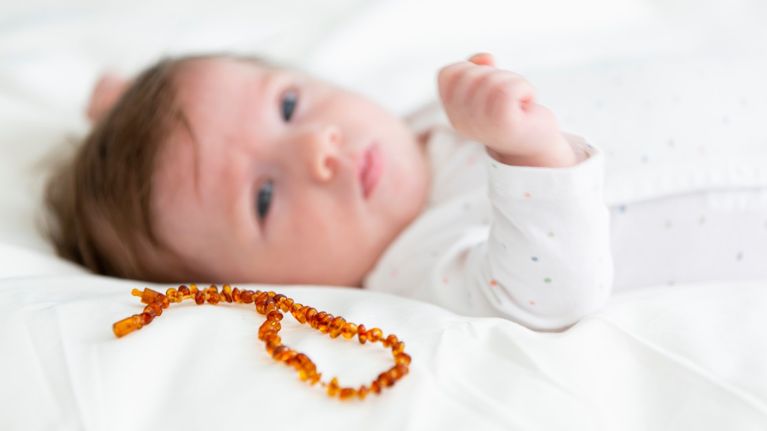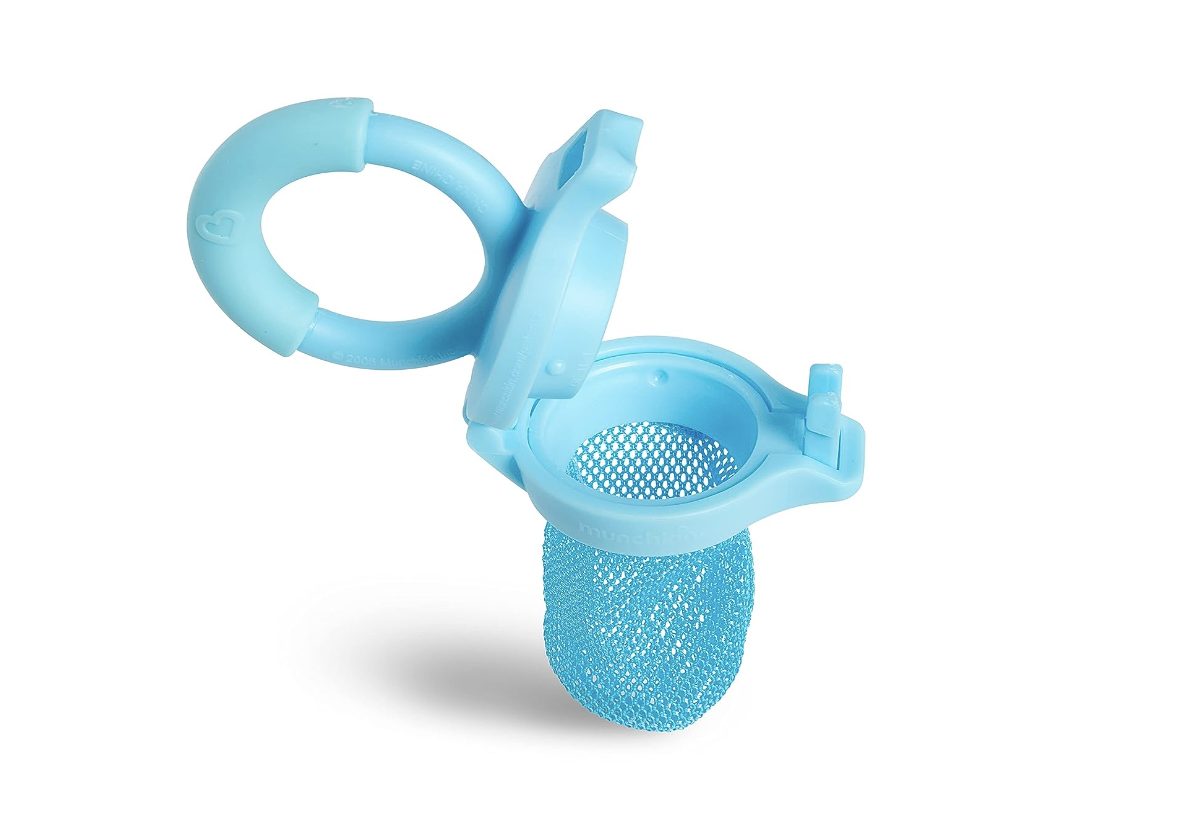Are amber teething necklaces safe?

iStockphoto
When your baby or toddler is teething, sometimes those wee teeth poke through without a lot of drama, but other times you’re in for night-time wake-ups, all-day fussing and one cranky kiddo. No wonder you start looking for ways to help them feel better.
Amber teething necklaces promise a natural, drug-free way to help with your little one’s teething pain, but many experts point out significant concerns. Here’s what you need to know.
What are amber teething necklaces?
These are necklaces strung with amber beads, sometimes with a magnetic fastener or another kind of clasp, and designed to help with teething pain. (There are also amber teething bracelets.) Amber is a natural substance created when tree resin becomes fossilized. There are several kinds of amber, named for the regions in which they’re found, and one of the most common is Baltic amber.
Why do people use amber teething necklaces?
You may have noticed other babies wearing them at your playgroup—they’re popular and widely available, and many parents swear by them. Amber contains succinic acid, which is thought to have anti-inflammatory and painkilling properties. It is believed that when the beads are worn next to the skin, succinic acid is released into the body, providing relief from the pain and tenderness of teething.
In theory, this is a great idea, especially since baby teething gels intended to soothe sore gums have been removed from Canadian stores recently and banned in the United States by the U.S. Food and Drug Administration (FDA).
Do amber teething necklaces work?
It doesn’t look like it. A 2019 study by Canadian and Australian researchers, published in the medical journal BMC Complementary Medicine and Therapies, reported that the succinic acid found in Baltic amber is not released when worn next to the skin and that succinic acid is not an anti-inflammatory.
“There’s not enough evidence that these necklaces work, but there’s a lot of evidence that they are dangerous,” says Farah Abdulsatar, a paediatrician in London, Ontario.
Are amber teething necklaces safe?
There is mounting research that amber teething jewellery, including necklaces, is not safe. The Canadian Paediatric Society (CPS), American Academy of Pediatrics and FDA warn parents and caregivers not to use amber teething necklaces on babies and toddlers.
What are the risks of amber teething necklaces?
Possible strangulation and choking are the main risks. “You basically have a cord wrapped around an infant’s neck,” says Abdulsatar, who co-authored a report for the CPS in 2018 that outlined the risks. She points to a case report in Nova Scotia where parents brought a four-month-old to the hospital who showed signs of strangulation in the face and neck and, after bloodwork and investigation, the only explanation was that it was the baby’s first night going to bed with a teething necklace.
“The necklace got twisted for part of the night, preventing air and blood from going to his head,” she says.
Her study also included survey results from Canadian doctors, who reported cases of children swallowing the magnet clasp, non-fatal strangulation by the necklace, choking on the beads and contact dermatitis.
Fortunately, no deaths or serious injuries have been reported in Canada, but there has been at least one death in California and a near-strangulation in Australia.
Some amber teething necklaces are marketed with “breakaway” clasps that will give way with a small amount of force, freeing the child if it catches on something. However, a 2018 study, conducted in Nova Scotia and published in Paediatrics & Child Health, checked 15 different teething necklaces purchased from retailers in Atlantic Canada.
The necklaces were tested with a 15-pound weight (the industry standard used to test children’s jewellery) and a 1.6-pound weight (the amount of force required to occlude or block a child’s airway). The study found that seven of the 15 necklaces did not open with 15 pounds of force, and eight did not open with 1.6 pounds of force.
The authors concluded that “these necklaces pose a strangulation risk to young children if they become caught.”
Finally, teething necklaces can be a source of harmful bacteria picked up from the baby’s environment. Researchers at a French hospital tested the amber necklaces of 27 kids brought into the dermatology clinic or emergency room and found that all of the necklaces had various types of bacteria on them (bacteria naturally live on the skin) and three had methicillin-susceptive Staphylococcus aureus (MSSA) bacteria, which can cause skin infections.
What if my child only wears an amber teething necklace when they’re awake and supervised?
“It’s difficult to keep your eyes on an infant or toddler 100% of the time, and it goes back to the risks and benefits,” says Abdulsatar. “There are other safer things we can do. Choking or strangulation takes only a few seconds.”
What are alternatives to amber teething necklaces?
Abdulsatar suggests solid chewing toys made of silicone that you can put in the fridge or freezer to soothe sore gums. They're easy to use, typically dishwasher safe and offer loads of cooling relief without the potential hazards of a necklace.
 Merchant
Merchant“We usually caution people about the liquid-filled ones because new teeth can puncture them and cause the liquid to leak,” she says. Frozen fruit or veggies inside a baby feeding tool (a fine mesh bag with a handle) is also a good thing to try. Your baby may also like to gum on a clean, frozen washcloth.
And she says it’s OK to use over-the-counter pain medicine, such as acetaminophen and ibuprofen, for kids who are teething (as long as you follow the directions about timing, body weight and dose).
Weekly Newsletter
Keep up with your baby's development, get the latest parenting content and receive special offers from our partners